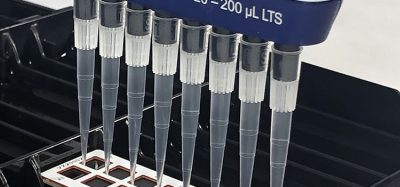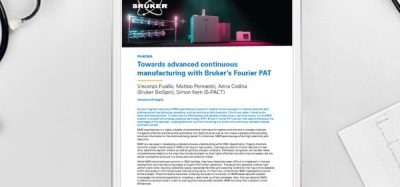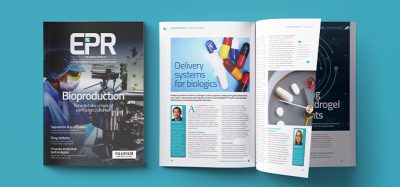Contributing to the Sustainability of the UK Chemicals and Pharmaceuticals Industries
Posted: 22 February 2010 | Professor Julian Morris FREng FIChemE and Professor David Littlejon FRSE, Centre for Process Analytics and Control Technology, Strathclyde University and Professor Roger Benson FREng, Perceptive Engineering Ltd., Daresbury, Cheshire | No comments yet
The Centre for Process Analytics and Control Technology (CPACT) is a unique industry-driven multi-disciplinary research and development club that was formed in 1997 by the Departments of Pure and Applied Chemistry at the University of Strathclyde, the Department of Chemical and Process Engineering at the University of Newcastle and the Department of Chemistry at the University of Hull, together with 18 member companies.
The Centre for Process Analytics and Control Technology (CPACT) is a unique industry-driven multi-disciplinary research and development club that was formed in 1997 by the Departments of Pure and Applied Chemistry at the University of Strathclyde, the Department of Chemical and Process Engineering at the University of Newcastle and the Department of Chemistry at the University of Hull, together with 18 member companies.
The Centre for Process Analytics and Control Technology (CPACT) is a unique industry-driven multi-disciplinary research and development club that was formed in 1997 by the Departments of Pure and Applied Chemistry at the University of Strathclyde, the Department of Chemical and Process Engineering at the University of Newcastle and the Department of Chemistry at the University of Hull, together with 18 member companies.
CPACT brings together chemical and process engineers, chemists, control systems engineers, chemometricians, signal processing engineers, and statisticians from academia and industry, to research solutions to generic problems in process optimisation, monitoring and control. The research is industry-shaped and provides routes to tangible scientific and technological benefits in process and pharmaceuticals manufacturing.
CPACT has raised the UK and European profile of the harmonisation of modern process analytics and control technologies, and indirectly contributed to the recent global FDA PAT initiative. CPACT has grown its academic network base through the membership of Imperial College (Centre for Process Systems Engineering), Manchester (Chemical Engineering and Analytical Instrumentation, and the Control Systems Centre), Leeds (Chemical Engineering), Heriot-Watt (Chemical Engineering) and most recently Hunan, the top Chemometrcs University in China. CPACT aims to support the entire Supply Chain in the process industries to enhance profitability, quality and competitiveness through modelling, advanced control and optimisation activities. CPACT addresses the increasing needs for training and the dissemination of best practice and technological innovations through its CPD courses and the establishment of partnerships with CIKTN alongside the annual APACT conference series and the new triennial EUROPACT European conference inaugurated at DECHEMA in Frankfurt in 2008, with EUROPACT 2011 to be held in Glasgow.
What are CPACT’s objectives?
CPACT’s objectives are to (i) provide expertise, training, technology translation and R&D in Process Analytics, Process Monitoring, Process Control, and Process Control and Optimisation; (ii) provide advances in on-line real-time Process Analytical Technologies (PAT) and their use in process control for chemical and pharmaceutical processes; (iii) to develop advanced data analysis and modelling of lab, development and production data; (iv) to provide leading edge process performance (condition) monitoring technologies; (v) to enable next generation supply chains including flexible, responsive and intensified process manufacturing; and (vi) to provide technologies that contribute to reducing energy costs and environmental impact.
How does CPACT achieve these objectives?
CPACT achieves these objectives through activities such as: (i) effective training of the workforce; (ii) providing access to leading edge research and academics; (iii) providing well-trained PhD and Post Doctoral personnel; (iv) effective leveraging of company resources; (v) sharing generic project learning benefits for the whole chemicals sector; (vi) providing networking opportunities and a forum to raise the profile of process analytics and control technologies across the process sector; (vii) providing access to a dedicated web site with open and members sections; (viii) ensuring R&D and Networking funding sources are effectively leveraged; (ix) driving cost reductions in process analytics through new technologies and (x) facilitating demonstration projects in industry, including participation in national schemes such as the Knowledge Transfer Partnerships (KTPs).
What are the areas where research is required?
CPACT concurs with recent conclusions reached by CIKTN concerning priority areas for innovation in the Chemistry-using Industries. Three areas where CPACT is focussing research are: Miniaturised high performance measurement systems; Integrated multi-dimensional data analysis and predictive modelling methodologies; and Rapid prototyping in bio-pharmaceuticals and speciality chemicals.
Miniaturised high performance measurement systems
Wider application of in-process measurements for monitoring and control depend on the availability of high performance analysers that are much less expensive, smaller and potentially wireless operated. These attributes can be achieved with spectroscopic analysers, but a new approach is required in the design of process specific devices, making use of recent developments in optical, photonic and electronic components. Figure 1 (courtesy of Fibre Photonics and J&M Analytik) shows a schematic illustration of a process analytical platform which consists of miniaturised fibre optics and a probe holder which encases separate probes to permit the combination of different spectroscopic measurements. The system incorporates the latest technology in in-situ probe cleaning, as well as capabilities for adjusting path-lengths which have been successful in previous probe designs (e.g. the Lighthouse ProbeTM).
The vision is to conduct enabling research that facilitates a new culture in process analysis, where instrument modules can be specifically configured for the desired application, with built-in multivariate calibration methodology. The intention is to make advances in photonic and chemometric-based devices that will permit the development of modular spectroscopic measurement systems operating in the visible, near infrared and mid infrared regions. These systems need to be suitable for a wide range of applications, from discovery through development and into manufacturing, using conventional or newer intensified reactors, and be applicable in rapid prototyping. Some of the research focuses on three key areas: optical sources, spectral analysers and detection systems. Advances in micro-machining of optical components and MEMs alignment techniques will be important to create compact platforms for spectral measurements involving Raman scattering as well as molecular absorption at wavelengths ranging from the UV to MIR.
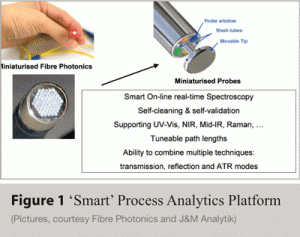

Integrated multi-dimensional data analysis and predictive modelling methodologies
Current state-of-the-art chemometrics methods have yet to satisfactorily overcome challenges posed by particulate processes in spectroscopic analysis, such as confounding effects due to the scattering of light. R&D is being progressed on novel physics-centric approaches, to overcome the issues arising in the extraction of chemical information from spectroscopic measurements of powders and suspensions. The deployment of advanced measurement technologies in multi-dimensional product/process innovation, development and scale-up, will generate challenges in data analysis that will require innovative methodologies for information extraction and predictive modelling. Exploratory research in this field is combining physico-chemical based phenomenological models with statistical models, in conjunction with the novel measurement configurations described above. The advances in instrumentation and information extraction methodologies will lead to the development of measurement-interpretation platform technologies that will have tremendous potential in areas such as medical diagnostics, homeland security, environmental monitoring, and in food and agriculture, in addition to the monitoring of a wide variety of chemical processes. In all these areas there exists a pressing need for portable instruments for reliable in situ measurements of critical physical and chemical properties.
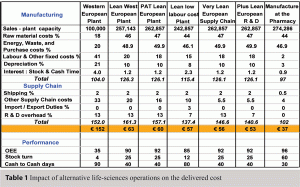

Rapid prototyping in bio-pharmaceuticals and speciality chemicals
The capability of rapidly developing novel products and efficient manufacturing processes is at the core of the competitive advantage for the process sector. Underpinning advances are being explored in this area through developments that centre on the use of advanced flow reactor technologies, intensified HI-G packed bed fermentation processes and continuous oscillatory baffled fermentation reactors. Much of the intensified process technology exists today (see Figure 2) and is practiced in countries such as Japan and China, whereas until recently, its application in the UK has been constrained by the belief that “big is beautiful”.
Many chemical reactions have now been demonstrated to show improved reactivity, product yield and selectivity when performed in micro reactors compared to those generated using conventional reactors, and are completed in much shorter times. One area where this can produce significant advantages is in drug and process discovery, where the generation of compounds either with different reagents or under variable conditions is an essential factor. A key challenge is to link in situ measurements and real-time data analysis to micro-reactor and intensified processing technologies to generate fundamental understanding and extend applicability.
Strategic Development and Vision
Although a lot has been achieved, a significant step-change is required if the next major advances in process analytics and control technologies are to be realised. Furthermore, there are common research challenges in measurement, data analysis and modelling that are essential to enable advances in discovery, process innovation and manufacturing. The vision is to develop the core expertise of CPACT to initiate new multi-disciplinary research in miniaturised measurement systems, integrated multi-dimensional data analysis, and rapid prototyping and scale-up. The requirements are to retain key researchers, develop new research collaborations and conduct high-risk speculative investigations that will scope new lines of research. CPACT will pursue this vision through the sustained growth of the presently successful critical mass of research personnel, continue to build a national and international network of process analytical and control technology researchers, and conduct fundamental studies to identify and harness new capabilities that will be demonstrated as being “fit for purpose” on industrial systems.
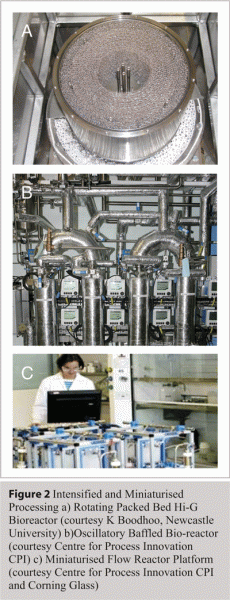

The threats and opportunities
The key to analysing the threats and opportunities to chemicals and pharmaceuticals manufacturing is to focus on the delivered cost of the product to the customer in Europe, not just the cost of the product leaving the manufacturing plant. The delivered cost is the cost that determines the final customer’s buying decisions. One approach to analyse the impact is shown below in Table 1 which summarises in a simplified way a typical life science operation1, using a previously developed benchmarking approach2.
The first column characterises a Western European life science manufacturer. The cost breakdown is based on true figures. The analysis is dimensionless and considers a plant manufacturing 100,000 units of product. These might be blister packs or consignments. The cost breakdown as a % of manufactured product cost is:-Raw materials 18%, energy 20% and labour 41%. As a relatively new and expensive plant is used, its depreciation is high at 21%. The manufacturing performance is the average for the Life Science Industries with an OEE (Overall Equipment Effectiveness) of 35% and a Stock Turn of 4. The Cash-to-Cash time of 90 days is the total number of days between the manufacturer paying for the raw materials and the customer paying for the products; in some parts of the Life Science industries it may be even longer. Shipping costs are low at 2% as most products are sold locally, but the other supply chain costs like storage, transport, marketing, insurance, administration, IT etc. are high at 14% of delivered costs. Using an 8% interest rate on money to fund the stock and the Cash-to-Cash days, this performance results in a delivered cost of 152/unit for a Western European plant. Other columns in the Table compare similar plants operating in a low labour rate country. Each column analyses a different business approach and the impact on the delivered cost per unit. The final column analyses a move to Distributed Agile manufacturing involving “Agile” plants capable of manufacturing to a “unit of one”. This term was first described in a 1999 UK Manufacturing Foresight study on the future of manufacturing in the UK in 20203. The concept of a “unit of one” is that the manufacturing plant only manufacturers exactly what the customer orders, no more or no less.
Conclusions
It is impossible for the low labour cost countries to compete with a lean, reliable fully automated, sustainable agile plant on the customer’s site when they have to transport the product half way around the world.. Continuous innovation in all aspects is the key. Does the UK Process Industry have the will to deliver the required changes?
It is possible for the European countries to compete and win against non G8 Countries? Yes, but the G8 countries must (i) fully apply the principles and learning of “Lean” to Manufacturing and the Supply Chain; (ii) invest in automation (iii) develop and invest in appropriate agile and responsive process plants; (iv) focus on customer needs in delivering outstanding products and services; and (v) develop a culture of continuous Innovation.
If these improvements are not embraced, the process industries in Europe could disappear within 10 years! It has already happened to industries like the wool / cotton / textiles / consumer electronics – just cutting costs will fail.
References
- Benson RS, ‘Off shoring’ lifecycle production is not the only answer, ISPE Journal 27 (4): pp22-32, July/August 2007
- Ahmed M and Benson RS, Benchmarking in the Process Industries, May 1999
- Manufacturing 2020: We can make it, http://www.foresight.gov.uk/Previous Rounds/Foresight 1999-2002/Manufacturing 2020/Reports/Reports.html



